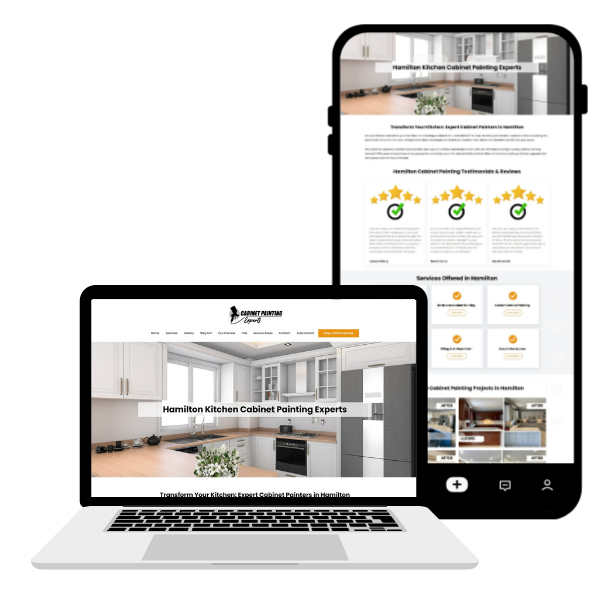How to Justify Your Painting Service Pricing and Overcome Price Objections
Quick Answer: Justify your painting service pricing by highlighting your expertise, quality materials, proper preparation, warranties, and long-term value. Overcome price objections by emphasizing the difference between price and cost, demonstrating your professional processes, and sharing specific examples of your superior workmanship and customer satisfaction.
Learning how to justify your painting service pricing and overcome price objections is essential for running a successful painting business. Whether you’re an experienced contractor or just starting out, having the right strategies to communicate your value can make the difference between winning and losing jobs. This guide will help you confidently explain your pricing and handle common customer concerns about cost.
Powerful Lead Generating Websites For Painters

Understanding Your Value Proposition
Before you can effectively communicate your worth to customers, you need to fully understand what makes your painting service valuable. Think about these key aspects of your business:
Professional Expertise and Experience
- Your years of experience and specialized knowledge in different painting techniques
- Ongoing training and certification in the latest painting methods
- Deep understanding of surface preparation and paint chemistry
- Knowledge of local climate conditions and how they affect paint performance
Quality Materials and Equipment
- Investment in professional-grade tools and equipment
- Relationships with premium paint suppliers
- Access to commercial-grade products not available to general consumers
- Ability to choose the right products for specific conditions
Comprehensive Service Delivery
- Thorough surface preparation procedures
- Detailed project planning and scheduling
- Professional cleanup and site maintenance
- Regular communication throughout the project
- Post-project follow-up and support
Communicating Value to Customers
Here’s how to effectively convey your worth to potential clients:
Show, Don’t Just Tell
Share before-and-after photos of your work, particularly projects similar to what your prospect needs. Explain specific challenges you encountered and how you solved them. For example:
“On this colonial home project, we discovered significant wood rot during our initial inspection. Our team didn’t just paint over it – we replaced the damaged sections and applied specialized primers to prevent future issues. Five years later, the paint still looks fresh and the wood remains solid.”
Emphasize Long-Term Value
Help customers understand the difference between price and cost:
“While our initial price might be higher than some competitors, consider the long-term cost. A properly done paint job with quality materials can last 7-10 years, while a cheap paint job might need redoing in 2-3 years. When you factor in the time, hassle, and expense of repainting more frequently, professional work proves more economical.”
Highlight Your Warranty and Guarantees
- Explain your warranty terms in clear, simple language
- Compare your coverage to competitor offerings
- Share examples of how you’ve honored your warranty commitments
- Emphasize your track record of standing behind your work
Handling Price Objections
When customers raise concerns about pricing, use these proven response strategies:
“Why is your price higher than [competitor]?”
Response Script: “I appreciate you asking about the price difference. Let me explain what’s included in our quote that makes it a better value:
- We use premium [specific brand] paint that costs $20 more per gallon but lasts years longer
- Our prep work includes [detail specific steps] that many painters skip
- We carry full insurance coverage to protect your property
- Our warranty covers both labor and materials for [X] years
“I got another quote for half the price.”
Response Script: “I understand price is important. Could you share what’s included in that quote? Often, lower prices mean corners are being cut in crucial areas like:
- Surface preparation
- Number of coats
- Quality of materials
- Insurance coverage
- Warranty protection
Let me walk you through our process so you can see exactly what you’re getting for your investment.”
Building Trust Through Transparency
Be open about your pricing structure:
- Break down costs into clear categories
- Explain what drives different aspects of pricing
- Share how certain choices can affect the final price
- Offer options at different price points while maintaining quality
Example Cost Breakdown:
“For this project, here’s how our price breaks down:
- Materials (premium paint and supplies): 25%
- Labor (skilled professionals): 45%
- Preparation work: 15%
- Project management and quality control: 10%
- Warranty reserve: 5%”
Key Takeaways for Success
Remember these essential points when discussing pricing:
- Always focus on value rather than defending price
- Use specific examples to illustrate quality differences
- Share customer testimonials and project photos
- Maintain a confident, professional tone
- Listen to customer concerns and address them directly
- Offer clear, detailed explanations of your process
By mastering these strategies for justifying your pricing and handling objections, you’ll close more sales and build a stronger, more profitable painting business. Remember, customers who understand and appreciate your value are more likely to become loyal clients and refer others to your service.
Powerful Lead Generating Websites For Painters

